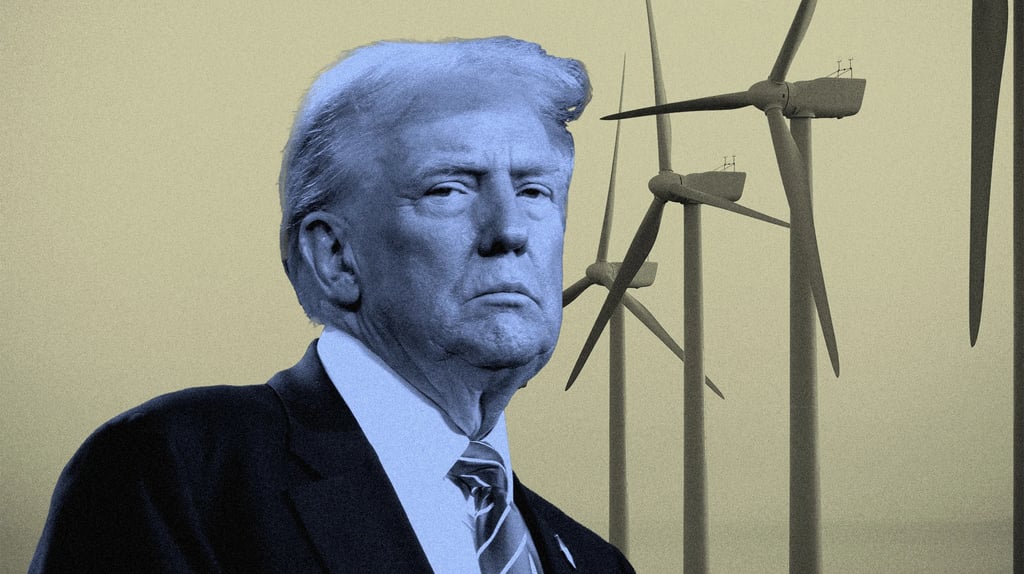Trump Executive Order Pulls Plug on Wind and Solar Subsidies, Paves Way for Nuclear Innovation
A bold pivot from “green illusions” to carbon-reversing technologies could reset America’s energy future, with Ohio leading the charge.
NEWS
Miranda Morrow
7/8/2025


By Miranda Morrow, Energy Correspondent
WASHINGTON — In a move sure to reshape the energy landscape, President Donald J. Trump issued Executive Order 14315 titled “Ending Market Distorting Subsidies for Unreliable, Foreign-Controlled Energy Sources,” taking aim at long-standing tax credits and subsidies for wind and solar power. The order aligns U.S. energy priorities with dispatchable, domestic, and secure sources — namely, advanced nuclear energy and carbon-reversing innovations.
The directive orders the Departments of the Treasury and Interior to begin eliminating preferential treatment for wind and solar projects immediately. It halts tax credits under sections 45Y and 48E of the Internal Revenue Code, curbs “safe harbor” workarounds that artificially qualify projects. It challenges the foreign-controlled supply chains that dominate so-called green energy.
“This is the course correction America needed,” said Donald Larson, Director of the eGeneration Foundation. “For years, the wind and solar industry has peddled propaganda, funded by taxpayers, to prop up inherently unreliable energy sources that drive up costs and destabilize the grid. The mask is finally off.”
The President’s executive action builds on reforms enacted in the One Big Beautiful Bill Act, a sweeping rollback of subsidies previously benefiting wind and solar. The order notes that such subsidies “compromise our electric grid” and have made the U.S. dependent on energy supply chains controlled by foreign adversaries.
What This Means for Ohio
Ohio stands uniquely positioned to benefit from this reset. With its existing nuclear infrastructure, emerging leadership in reactor development, and initiatives like the Ohio Nuclear Development Authority (ONDA), the state is well-positioned to attract investment in advanced nuclear projects that offer real environmental and economic benefits.
“This is the end of 16 years of economic mental gymnastics used to justify renewable subsidies in Ohio,” said Jon Morrow, Economist at eGeneration Foundation. “It’s a long overdue acknowledgment that matching unreliable renewables with fast-ramping fossil fuels doesn’t reduce carbon emissions — it increases them.”
Goodbye RECs, Hello Carbon Reversal Credits
The Executive Order may accelerate the rise of alternatives like Carbon Reversal Credits (CRCs), which reward investments into technologies that consume nuclear waste, decarbonize fuels, and produce energy with negative carbon output. Unlike Renewable Energy Credits (RECs), which critics argue are mere greenwashing, CRCs support grid-stabilizing technologies.
With subsidies for foreign-made solar panels and Chinese wind turbines being phased out, Ohio’s manufacturing sector could see a resurgence through domestic nuclear innovation. Modular fast-spectrum molten salt reactors, isotopic production hubs, and waste-to-energy systems that use plasma gasification could all be in ONDA’s crosshairs for development.
The Bigger Picture
Trump’s order also carries geopolitical weight. By undermining China's grip on green energy manufacturing and redirecting funds toward homegrown innovation, the U.S. is signaling a new era of energy sovereignty. Larson emphasized, “This is not just an economic realignment. It’s about national security, energy independence, and engineering superiority.”
What Comes Next
The Department of the Treasury and Department of the Interior are required to submit implementation reports within 45 days, but early signals suggest that project eligibility for renewable credits will be strictly narrowed, or eliminated entirely.
As Ohio’s legislators debate energy policy this session, they’ll be doing so in a post-renewables-subsidy reality. The question is whether the General Assembly will follow the federal lead and finally give advanced nuclear and Ohio’s energy consumers a fighting chance.


